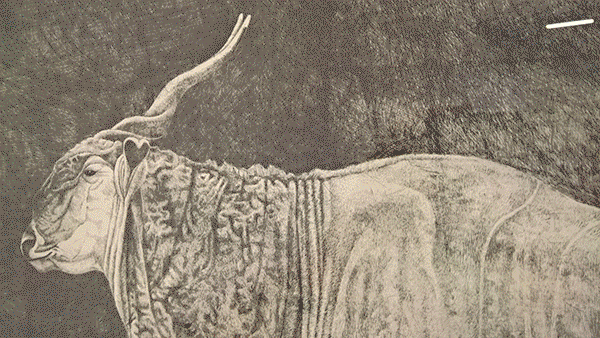News & Events
Have you seen the latest exhibition at the Unisa Art Gallery?
A selection of some of the best artworks in the permanent collection, curated by Jacob Lebeko, can be viewed until 14 March 2017.
Speaking of his vision for the exhibition, Lebeko said that he had selected and grouped the artworks from four main categories.
Historical artworks
Alexis Preller, Maud Sumner, Irma Stern, and Frieda Locke
- This category represents white South African art pioneers who were active between 1937 and 1975
- These are works that have not been displayed in a while and they were selected with art historians in mind and for all the viewers who have a liking for old masters.
Artworks that border between art and craft
Lucky Sibiya, Simon Mashapo, Wayne Baker, and Ben Nsusha
- These artworks blend the use of contemporary and traditional materials. The materials that they employ make them fashionable and exciting to talk about.
- On the one level, one can observe the skill behind their making, while on another level there is also an obvious consciousness of currents debates that can be picked-up in the subject matter employed.
Political artworks
Charles Nkosi, Fikile Magadlela, Willie Bester, and Ranko Pudi
- Here we refer to artworks created in the 1970s by black South African artists.
- There were two categories of artists, those who went through formal art education in missionary schools such as the Rorkes Drift Art Centre in KZN, and those who were self-taught. The self-taught artists were part of the Township Art Movement and were radical in their approach to socio-political themes, while the artists from missionary schools employed religion to critic the political era of the time.
Art for art’s sake
Norman Catherine, Helen Sebidi, Robert Hodgins, Graeme Williams, and John Moore
This group of artists produced artworks that were neutral in outlook and were never created to make a serious statement. The subject matter is something personal to the artist and usually makes reference to individual experiences and interests.
These works are not grouped in one space in the exhibition, but are displayed randomly around the exhibition as they can work with any other groupings around them. The skill and technique employed or the use of materials and compositional structure is of utmost importance in viewing such work. Humour is sometimes reflected in reading the titles. International art mimicry is also typical of such artworks.
How did the Unisa Art Collection come to be?
The Unisa Art Collection of mainly South African contemporary art was initiated in the early 1960s by the late Professor J L Steyn, then head of the Department of Afrikaans-Nederlands at the University of South Africa. Artworks purchased decorated the walls of the Senate Hall at the old Unisa Campus in Skinner Street, Pretoria. Funding for these acquisitions was made available by the Vice-Chancellor and Principal of Unisa, the late Professor Samuel Pauw.
In 1961 the Department of History of Art and Fine Arts was established under the headship of Karin Skawran (1937-2015). In collaboration with Professor Walter Battiss (1906-1982), who was later appointed in 1967 as head of department, a regular budget was made available for the expansion of the art collection. It was through Battiss’s personal contact with many artists that contributed to the further extension of the art collection. At this stage there was no acquisition policy and no art gallery.
The main purpose of the collection at the time was for teaching purposes and research. In 1972 the department moved to the newly built campus on the Muckleneuk Ridge, occupying the 11th floor of the Theo van Wijk Building. It was again through the financial support of the university under the then Vice-Chancellor and Principal Professor Theo van Wijk (1917-2009) that the collection continued to grow. The collection at that stage comprised works by most major South African artists. In 1970, Walter Battiss initiated a silkscreen exhibition in the department. National and international silkscreens were exhibited and the technique was demonstrated to students by Maurice Khan and other South African artists. Several of these works were purchased for the Unisa collection.
External support was also acquired through the support of the
University of the Witwatersrand Gertrude Postel art gallery, where the Unisa collection was first publicly exhibited in 1979 and opened by Van Wijk. Then in 1984 a temporary display venue was made available in the Theo van Wijk Building Exam Halls, with Valerie Evangelidis as a temporary curator of the collection. By 1985, the collection comprised 617 artworks, and there was now discussion on the need for a much more permanent gallery space. In 1989 the old library space on the 5th floor of the TVW Building was made available as the new home for the Unisa Art Collection. In the same year the new gallery space was inaugurated with the “Battiss and the spirit of place “exhibition, which was dedicated to the memory of Professor Walter Battiss.
The new gallery space was made available to give the public access to the collection through regular educational exhibitions and art related events. The gallery space was later also made available to local professional and up-coming artists for showcasing their artworks. Although quite a few works were collected during the sixties and the seventies; the eighties can be identified as the foundation period of the collection. It was during this period that the university formally put proper structures and budgets in place for the well-being of the Unisa Art Collection.
Currently, the Unisa art collection has over 2 000 artworks in its holdings. In 2011, a new gallery space was built as part of the new university entrance building, Kgorong, with much bigger store-rooms and large office spaces. The new gallery exhibition space is 858 m2; with movable walls and a ceiling height of 4.270 m. The new art gallery space has become the pride of Unisa, located on the ground floor for easy access and recognition of Unisa’s dedication to supporting the arts.
*Compiled by Jacob Lebeko
Publish date: 2017/03/14

